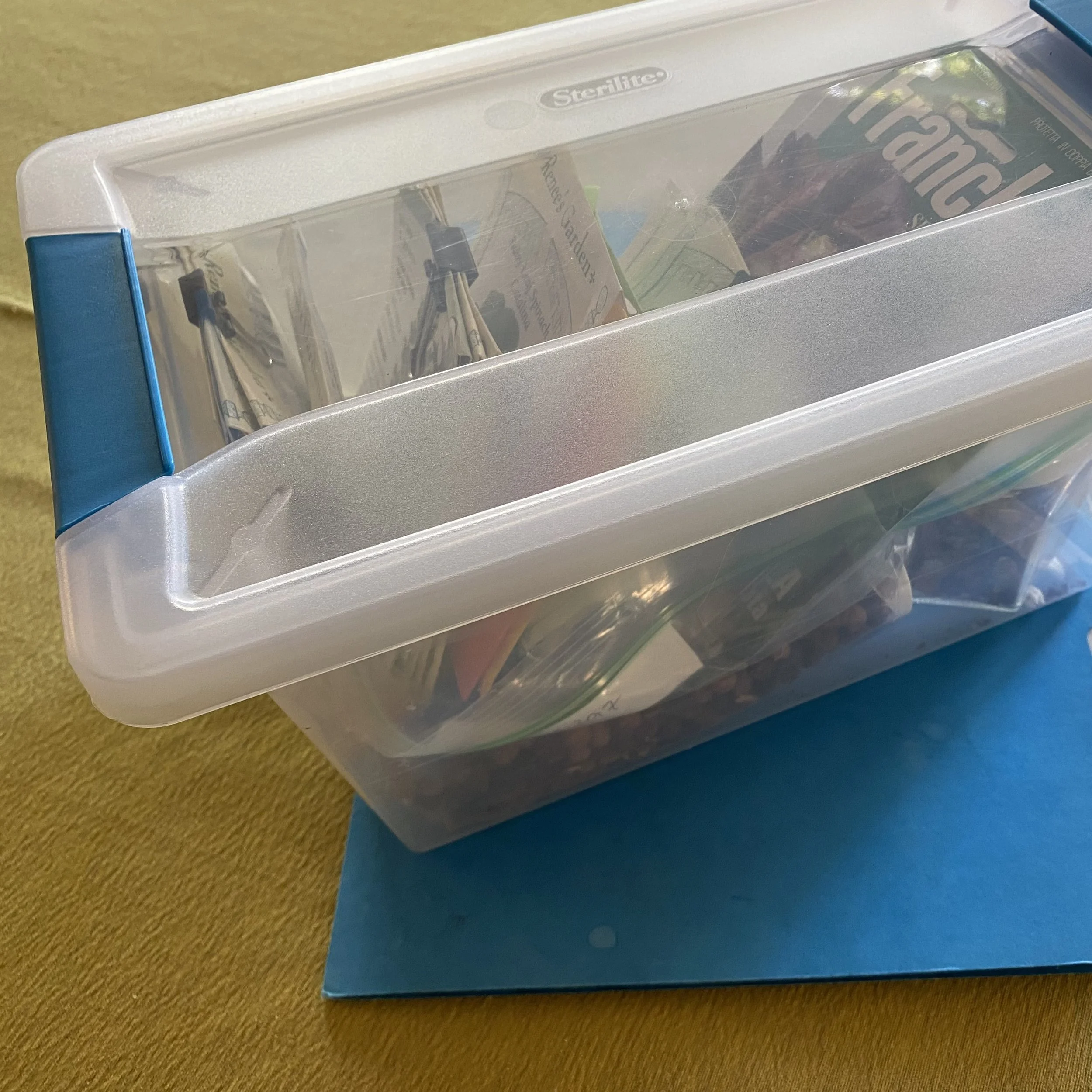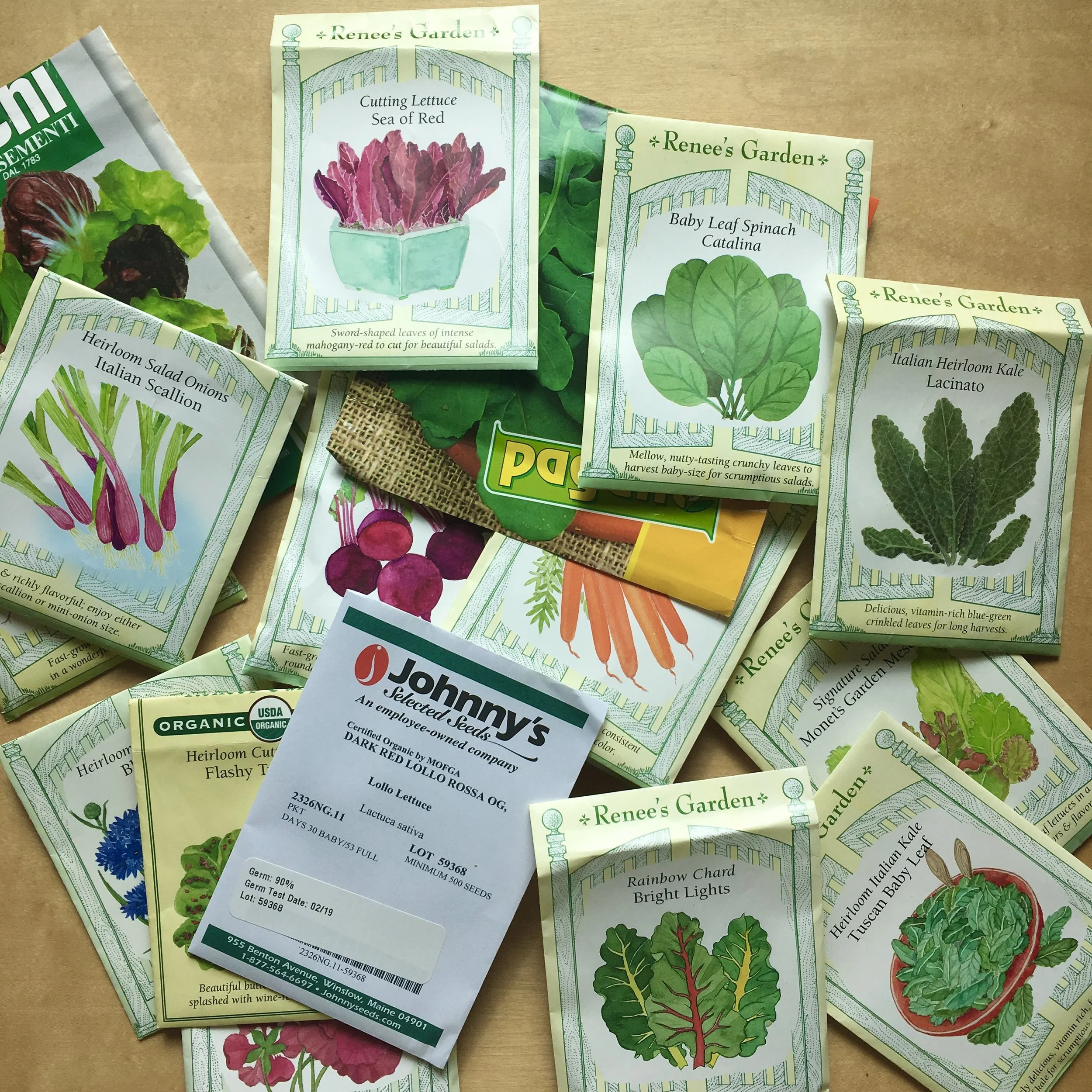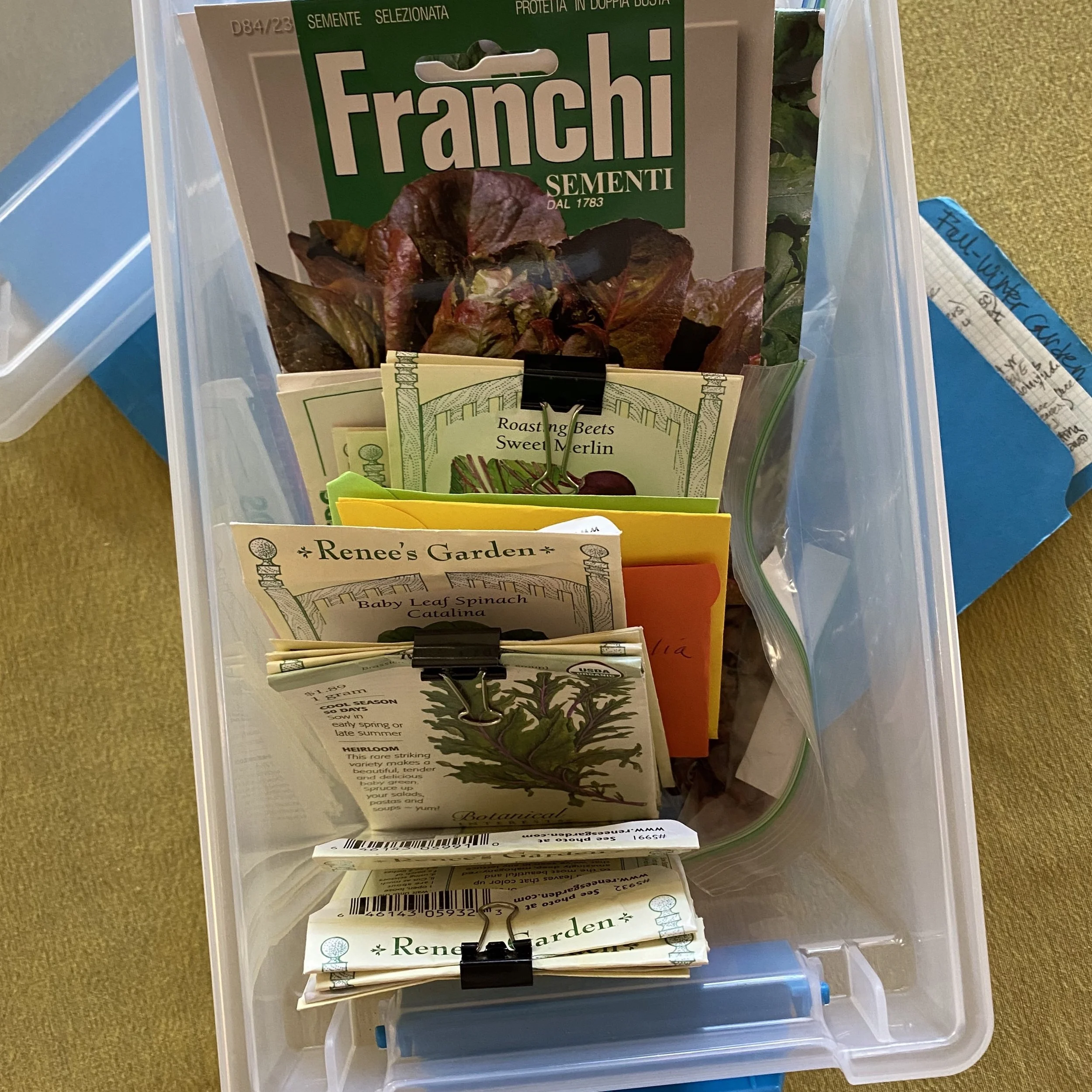Seed Life and Testing Viability
Are you wondering if your seeds will germinate for the coming season? You could plant and then wait, or you could test their viability. Read how to store vegetable seeds to optimize seed life and how to test viability.
Then check the Seed Life Chart below to see how long you can expect properly stored vegetable seed to remain viable.
Johnny’s Selected Seeds website has an excellent seed storage guide. Here’s an excerpt.
How Long Can Seeds Last in Storage?
Some seeds will remain viable in storage for several years if stored under optimal conditions — namely, low humidity and low temperature (42°F or 5.6°C)… The actual storage life will depend upon the viability and moisture content of the seed when initially placed in storage, the specific variety, and the conditions of the storage environment.
We recommend keeping seeds in a sealed glass jar in the refrigerator. Include a desiccant in the jar.
If your seed has been stored for any length of time, you may wish to test a sample of seeds to see if it still germinates well. Place some seeds between two damp pieces of paper towel, enclose them in a zip-lock sandwich bag, and place in a temperature-controlled environment suitable to the variety's specific germination requirements. (Refer to the packet back or the product page on our website for optimal germination temperature.) After several days — or longer for slow-to-germinate varieties — check to see how many of the seeds have germinated.
Note, however, that both germination rate and seed viability can decline with age of the seed. Viability refers to the seed’s ability to produce a vigorous seedling. Viability typically declines before germination rates decline, so it is possible for old seed to still germinate yet produce weak seedlings.
When retrieving seeds from storage, allow the container to reach room temperature before opening it. This will help prevent condensation from forming on the seeds and inside the container.
Average Storage Life for Vegetable Crop Seed Under Favorable Conditions
Arugula 6 years Beans 2-4 years Beets 2-5 years
Broccoli 3-5 years Carrots 3-4 years Corn 1-3 years
Cucumber 3-6 years Lettuce 1-6 years Peas 2-4 years
Peppers 2-5 years Radish 4-5 years Spinach 1-5 years
Tomato 3-7 years Watermelon 4-5 years
I’ve selected a few common vegetable seeds above but check Johnny’s website for a more complete list of vegetables, herbs and flowers.
Storing unused vegetable or flower seeds does require some care. To remain viable, seeds must not be exposed to any moisture or extreme temperature fluctuations. They should be kept in a cool dry place. I keep mine in plastic bins with tight-fitting lids in a cabinet in the garage. Four photo size bins organize my cool-season and warm season vegetable seeds, flower seeds and native plant seeds.








